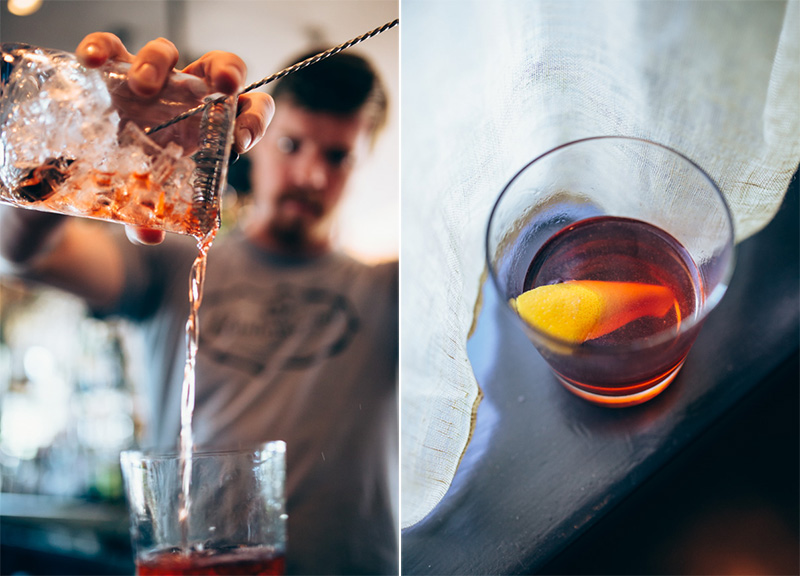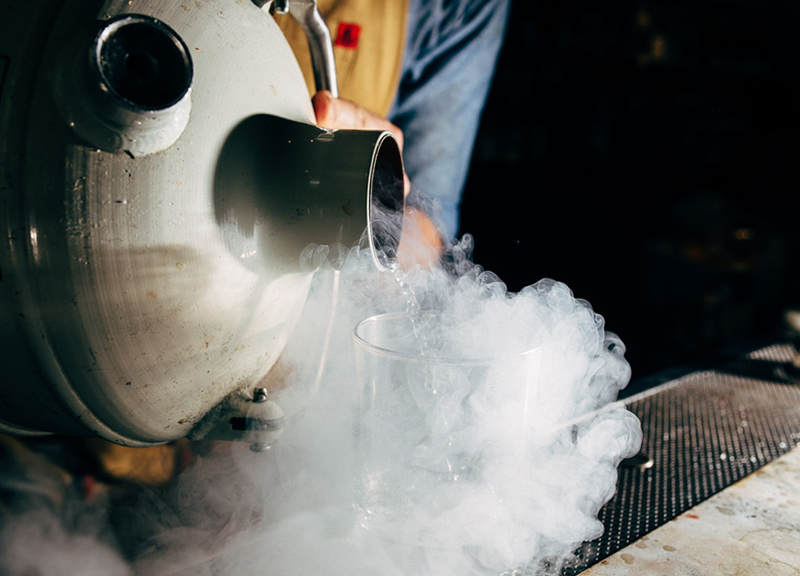Nickel & Rye, Boulevardier and FT33 School Us On The Classic American Cocktail, The Sazerac.
You're sitting at a bar, looking over the cocktail menu, assaulted with names of spices and bitters and alcohols that you don't even have the slightest goddamn clue about. You glance around woefully at your fellow bar friends, who all seem to be functioning perfectly well in this stressful situation. Panic grips your chest as the bartender saunters over to ask you what you'll be imbibing. Then you remember that article on Central Track that told you about the best cocktails in town and how different spots make them. And you realize that you're good. Because All Mixed Up has your back.
You've heard it a million times, no doubt from the mouths of Americans: America is the best country in the world.
So a question then: If America were to create a cocktail, would that cocktail be then also the best in the world? We're going to go with a shameless yes here. That's because the proof is already in the pudding — or, rather, the sazerac, the drink with the coveted and irrevocable title of America's First Cocktail.
Let that sink in. The Sazeric is the first cocktail. Of the greatest country. On Earth.
So how'd it come to be? Well, the sazerac was already considered a man's drink back when Americans were first blazing through Midwest, at a time when cowboys were actually still a thing and America was still on some The Good, The Bad and The Ugly-type shit. And the city that cooked it up? It functioned as a travel hub known for debauchery. Yes, it was in a bar in New Orleans called the Sazerac Coffee Bar that the recipe for this classic was first concocted.
This beta-sazerac, you could call it, was created with cognac as its liquor base. Shortly after the cocktail gained popularity, though, an epidemic struck the European vineyards that produced most cognacs, forcing enterprising bartenders to search for another liquor to mix. A true American liquor — rye whiskey — then became the new base. And so the real sazerac, the American sazerac, was born.
Along with that rye whiskey, a standard sazerac recipe calls for Peychaud's bitters stirred over ice and then strained into a glass with a lemon peel spritz and garnish. It's simple drink, just like the men who created it.
Today, even in lieu of the resurgence of cocktails across the country, a sazerac kind of remains a drinking man's order. But it's a tried-and-true tell of a bartender's mettle, which is why we're sharing here the versions made by some of our favorite barkeeps from around town.
Sazerac.
Nickel & Rye.
Uptown.
This McKinney Avenue bar is, above all, accessible for a wide variety of drinkers. Which isn't a bad thing. In fact, it's through places like Nickel & Rye where the public often first comes across the more-accessible versions of a classic cocktail. Nickel & Rye's sazerac falls right in line with this thinking.
Instead of a typical rye whiskey, Nickel & Rye uses High West Double Rye to further deepen the dry aspects of the drink. With that dry edge, they then soften the drink up a bit and turned to a Remy Martin VSOP champagne cognac to do just that. Add in some house-made simple syrup — “It really helps to make cocktails more craft-like,” bartender Marie Stinson says — and, from there, it's just what you'd expect with the bitters and garnish.
What these slight twists to the original accomplish are a unique, softer sazerac. The addition of the Cognac helps to deepen the flavor profile with the sweetness of the grapes.
Not everything has to be so rough-and-tumble all the time, you guys.
Sazerac. Bishop Art's Boulevardier is the place to go when you're in the neighborhood and craving a skillfully made and painstakingly thought-out drink. That's all thanks to Eddie Eakin and his staff, which has created some of Dallas' most memorable takes on the more storied classic cocktails around. Their sazerac keeps in that vein.
For his recipe, rather than using just rye whiskey or just cognac, Eakin too splits the difference: “The goal is to get the best of both,” he says. “The fruit and elegance from the cognac and the spicy grittiness from the rye.”
From there, it's a couple dashes of bitters — Eakin adds some gomme syrup for smoothness — and the lemon peel garnish.
The only word to describe the finished product is smooth. Velvety smooth. Smoother than you would imagine a sazerac could be. Holding one of these in your hand while walking around some Tombstone-esque town is easy to imagine.
Now off to get a cowboy hat…
il Saverio. FT33 is one of the crown gems in Dallas fine dining at the moment. It's a shining beacon of modern cuisine that makes use of fresh, ever-rotating foods. And, lucky for us, their cocktail program follows a similar philosophy.
Bar manager Scott Augat has worked tirelessly to create a cocktail program that flows seamlessly alongside FT33's dining experience — something he's accomplished through innovative recipes and an impressive, small-batch barrel-aging system. And it's in FT33's small, wooden barrels that lined the windowed end of the bar that Augat's spin on a sazerac is created.
Well, kind of.
“I started off trying to do a sazerac,” Augat says of his il Saverio. “Then it kind of evolved into its own drink.”
Named after Augat's grandfather, this drink makes use of many ingredient that are not the sazerac norm. Along with the rye whiskey, he uses fernet, maraschino cherry liqueur and a house-made lemon oil. That lemon oil, more of a syrup than an oil, is essentially simple syrup where the sugar that is boiled with the water has been infused with the juices from lemon peels.
The whiskey he uses, meanwhile, is aged for about a month in one of those aforementioned barrels, which add vanilla and chocolate flavors to the palate. That unique infusion, along with the fantastic house-made lemon oil, helps even out the rough edges usually found in a sazerac. And some falernum, which Augat says his grandfather always had in his liquor cabinet, helps to further subdue the taste, paving the way for an overall hearty cocktail that doesn't burn your throat all the way down.
Oh, and did we mention that he chills the glass with a cannister of frozen air before he serves this one? Because he does. And it's stupid awesome.
Boulevardier.
Bishop Arts.
FT33.
Design District.


















































